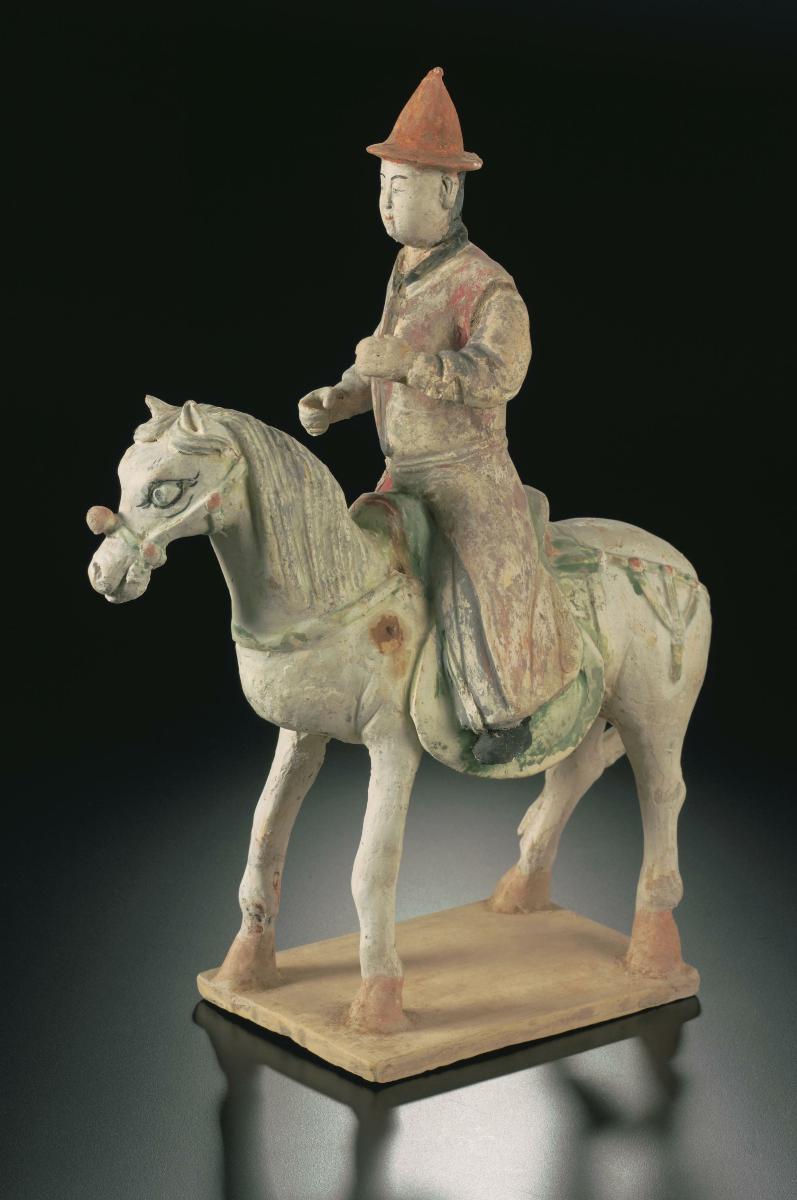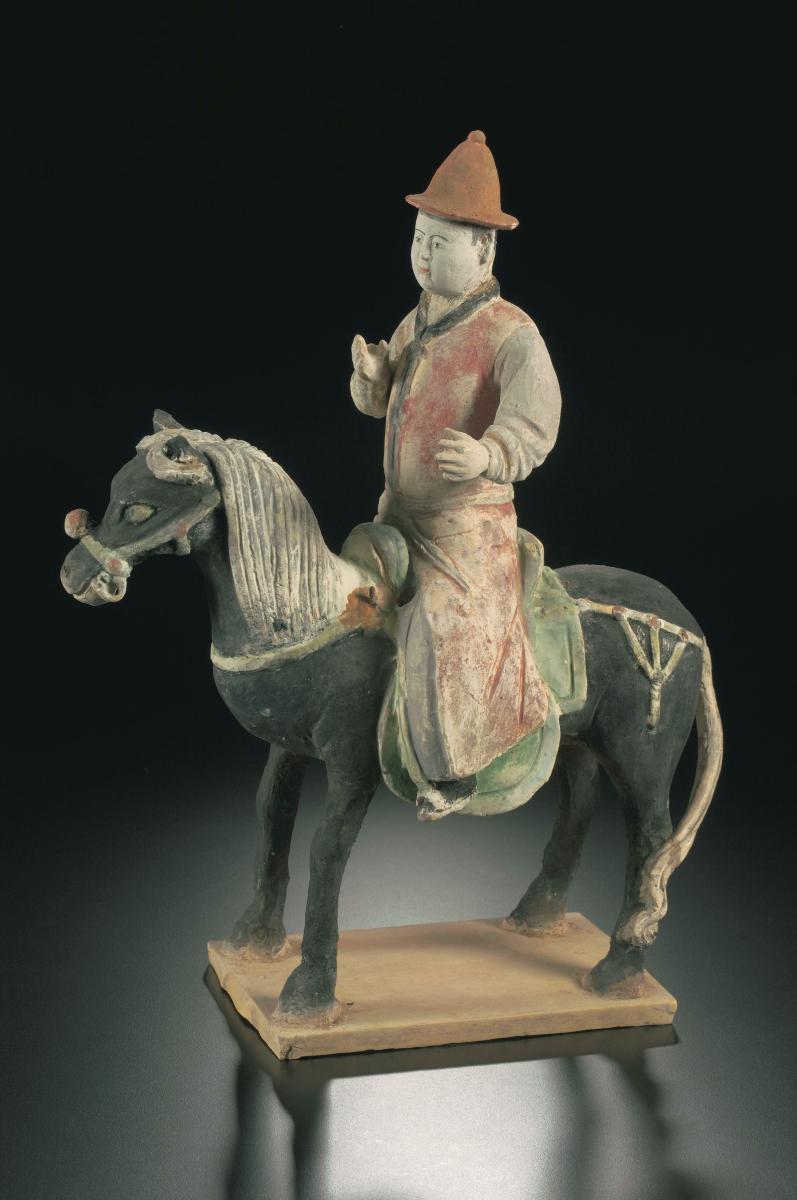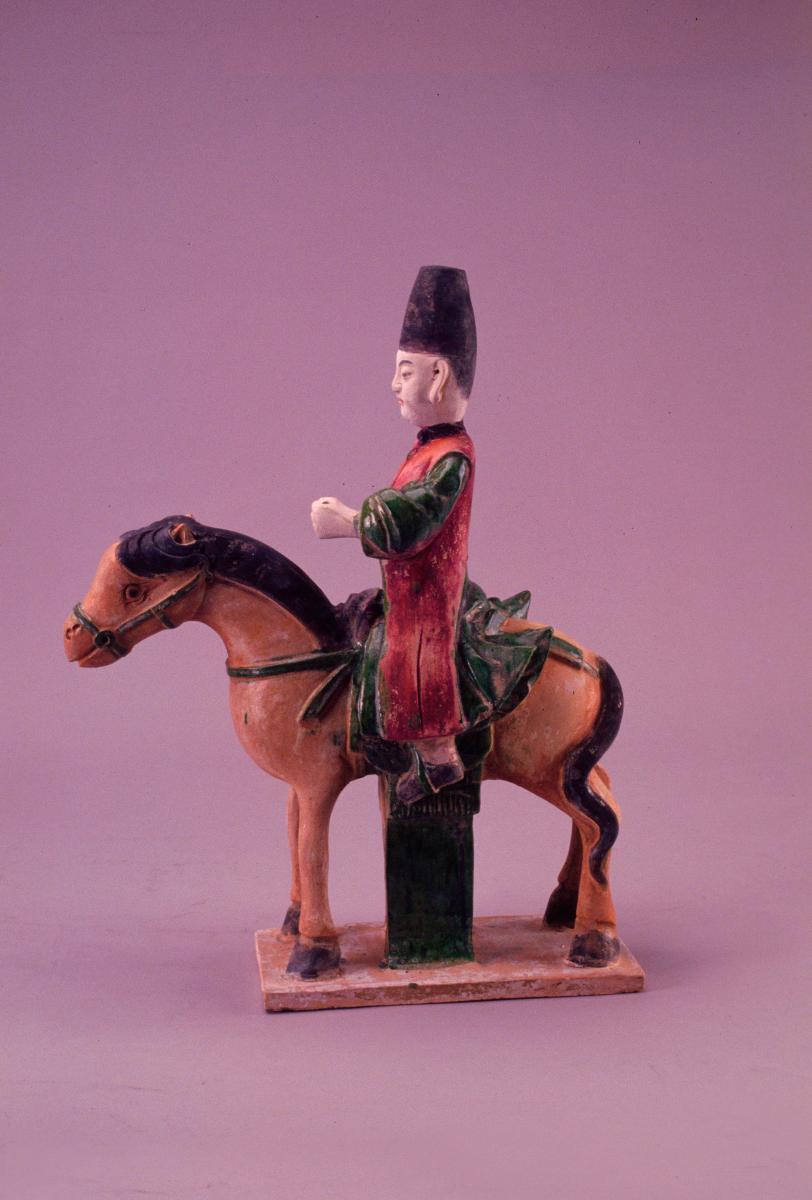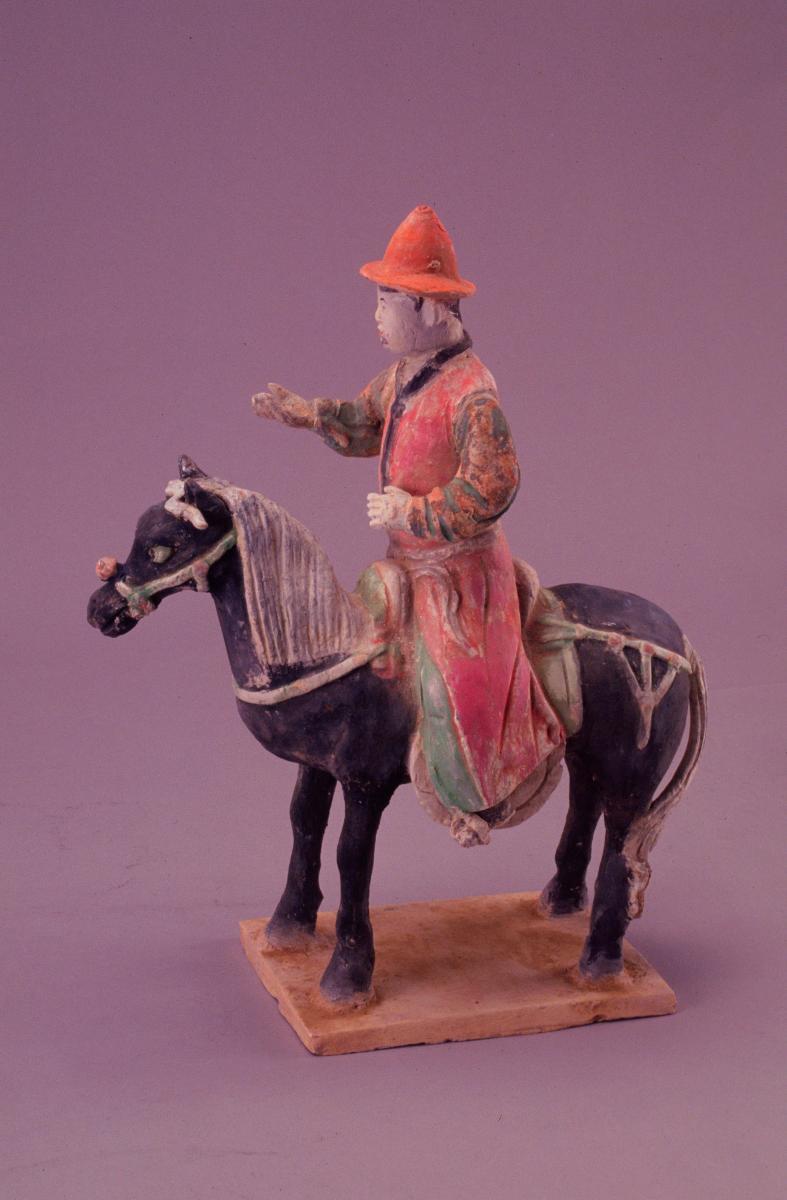This processional horse and rider are decorated with grey and vermillion pigments. The rider's hands simulate the action of holding the reins.The figurine is 'mingqi' or burial ware that would have been part of a larger group of funerary items. The custom was an ancient one. It is thought these wares were necessary for the deceased in the next world. Elaborate groups of burial wares were also a display of wealth and social status.The practice of using lead-glazed burial wares had already started during the Han dynasty (206 BCE-220 CE). This glaze technology further developed during the Tang dynasty (618-906) into ‘sancai’ (‘three-colour’) glaze. It included colours such as cream, amber, brown and blue. The glaze tradition continued into the Ming period.















